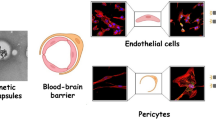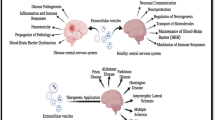Abstract
A physicochemical study of the interaction of pinocembrin with dimyristoylphosphatidylcholine (DMPC) liposomes was carried out. Unilamellar vesicles of about 100 nm were prepared. Pinocembrin was incorporated into the lipid membrane by interacting strongly with the acyl groups of the phospholipid chains, favoring the fluid phase. The incorporation efficiency was 89%. At concentrations higher than 0.436 mg mL−1 of pinocembrin, a change of structure from spherical to tubular liposomes was observed, and the enthalpy of this transition was determined by differential scanning calorimetry. After 0.744 mg mL−1, there was no change in the transition enthalpy from gel phase to liquid crystalline, so it is possible to assume that the lipid membrane reached saturation. With the findings presented in this research, it is possible to increase the solubility and bioavailability of the pinocembrin by using DMPC as a molecular carrier, enhancing its use as drug in the pharmaceutical industry to treat cancer, ischemic stroke, intracerebral hemorrhage, Alzheimer’s disease, cardiovascular diseases and atherosclerosis as well as other diseases.
Graphic abstract











Similar content being viewed by others
References
Fidler MM, Bray F, Soerjomataram I. The global cancer burden and human development: a review. Scand J Public Health. 2018;46:27–36.
Ferlay J, Soerjomataram I, Dikshit R, Eser S, Mathers C, Rebelo M, et al. Cancer incidence and mortality worldwide: sources, methods and major patterns in GLOBOCAN 2012. Int J Cancer. 2015;136:E359–86.
Rasul A, Millimouno FM, Ali Eltayb W, Ali M, Li J, Li X. Pinocembrin: a novel natural compound with versatile pharmacological and biological activities. BioMed Res Int. 2013. https://doi.org/10.1155/2013/379850.
Aygun A, Torrey K, Kumar A, Stephenson LD. Investigation of factors affecting controlled release from photosensitive DMPC and DSPC liposomes. Appl Biochem Biotechnol. 2012;167:743–57.
Ruddock PS, Charland M, Ramirez S, López A, Towers GHN, Arnason JT, et al. Antimicrobial activity of flavonoids from Piper lanceaefolium and other Colombian medicinal plants against antibiotic susceptible and resistant strains of Neisseria gonorrhoeae. Sex Transm Dis. 2011;38:82–8.
Chen Z, Rasul A, Zhao C, Millimouno FM, Tsuji I, Yamamura T, et al. Antiproliferative and apoptotic effects of pinocembrin in human prostate cancer cells. Bangladesh J Pharmacol. 2013;8:255–62.
Charoensin S, Punvittayagul C, Pompimon W, Mevatee U, Wongpoomchai R. Toxicological and clastogenic evaluation of pinocembrin and pinostrobin isolated from Boesenbergia pandurata in Wistar rats. Thai J Toxicol. 2010;25:29–40.
Liu R, Gao M, Yang ZH, Du GH. Pinocembrin protects rat brain against oxidation and apoptosis induced by ischemia-reperfusion both in vivo and in vitro. Brain Res. 2008;1216:104–15.
Zheng Y, Wang K, Wu Y, Chen Y, Chen X, Hu CW, et al. Pinocembrin induces ER stress mediated apoptosis and suppresses autophagy in melanoma cells. Cancer Lett. 2018;431:31–42. https://doi.org/10.1016/j.canlet.2018.05.026.
Lan X, Wang W, Li Q, Wang J. The natural flavonoid pinocembrin: molecular targets and potential therapeutic applications. Mol Neurobiol. 2016;53:1794–801. https://doi.org/10.1007/s12035-015-9125-2.
Liu R, Li JZ, Song JK, Zhou D, Huang C, Bai XY, et al. Pinocembrin improves cognition and protects the neurovascular unit in Alzheimer related deficits. Neurobiol Aging. 2014;35:1275–85. https://doi.org/10.1016/j.neurobiolaging.2013.12.031.
Lan X, Han X, Li Q, Li Q, Gao Y, Cheng T, et al. Pinocembrin protects hemorrhagic brain primarily by inhibiting toll-like receptor 4 and reducing M1 phenotype microglia. Brain Behav Immun. 2017;61:326–39. https://doi.org/10.1016/j.bbi.2016.12.012.
Stefanutti E, Papacci F, Sennato S, Bombelli C, Viola I, Bonincontro A, et al. Cationic liposomes formulated with DMPC and a gemini surfactant traverse the cell membrane without causing a significant bio-damage. Biochim Biophys Acta - Biomembr. 2014;1838:2646–55. https://doi.org/10.1016/j.bbamem.2014.05.026.
Moreno MM, Garidel P, Suwalsky M, Howe J, Brandenburg K. The membrane-activity of Ibuprofen, Diclofenac, and Naproxen: a physico-chemical study with lecithin phospholipids. Biochim Biophys Acta - Biomembr. 2009;1788:1296–303. https://doi.org/10.1016/j.bbamem.2009.01.016.
Basso LGM, Rodrigues RZ, Naal RMZG, Costa-Filho AJ. Effects of the antimalarial drug primaquine on the dynamic structure of lipid model membranes. Biochim Biophys Acta - Biomembr. 2011;1808:55–64. https://doi.org/10.1016/j.bbamem.2010.08.009.
Wu FG, Wu RG, Sun HY, Zheng YZ, Yu ZW. Demixing and crystallization of DODAB in DPPC-DODAB binary mixtures. Phys Chem Chem Phys. 2014;16:15307–18.
Wu FG, Wang NN, Yu JS, Luo JJ, Yu ZW. Nonsynchronicity phenomenon observed during the Lamellar–Micellar phase transitions of 1-stearoyllysophosphatidylcholine dispersed in water. J Phys Chem B. 2010;114:2158–64.
Wu FG, Jia Q, Wu RG, Yu ZW. Regional cooperativity in the phase transitions of dipalmitoylphosphatidylcholine bilayers: the lipid tail triggers the isothermal crystallization process. J Phys Chem B. 2011;115:8559–68.
Mady MM, Shafaa MW, Abbase ER, Fahium AH. Interaction of doxorubicin and dipalmitoylphosphatidylcholine liposomes. Cell Biochem Biophys. 2012;62:481–6.
Di Foggia M, Bonora S, Tinti A, Tugnoli V. DSC and Raman study of DMPC liposomes in presence of ibuprofen at different pH. J Therm Anal Calorim. 2017;127:1407–17.
Taylor KMG, Morris RM. Thermal analysis of phase transition in liposomes behaviour. Thermochim Acta. 1995;248:289–301.
Ohline SM, Campbell ML, Turnbull MT, Kohler SJ. Differential scanning calorimetric study of bilayer membrane phase transitions. A biophysical chemistry experiment. J Chem Educ. 2001;78:1251. https://doi.org/10.1021/ed078p1251.
Lentz BR, Barenholz Y, Thompson E. Fluorescence depolarization studies of phase transitions and fluidity in phospholipid bilayers. I. Single component phosphatidylcholine liposomes. Biochemistry. 1976;15:4521–8.
Jain MK, Wu NM. Effect of small molecules on the dipalmitoyl lecithin liposomal bilayer: III. Phase transition in lipid bilayer. J Membr Biol. 1977;34:157–201.
Harris JS, Epps DE, Davio SR, Kézdy FJ. Evidence for transbilayer, tail-to-tail cholesterol dimers in dipalmitoylglycerophosphocholine liposomes. Biochemistry. 1995;34:3851–7.
El Maghraby GMM, Williams AC, Barry BW. Drug interaction and location in liposomes: correlation with polar surface areas. Int J Pharm. 2005;292:179–85.
Pruchnik H. Influence of cytotoxic butyltin complexes with 2-sulfobenzoic acid on the thermotropic phase behavior of lipid model membranes. J Therm Anal Calorim. 2017;127:507–14.
Wei X, Patil Y, Ohana P, Amitay Y, Shmeeda H, Gabizon A, et al. Characterization of pegylated liposomal mitomycin c lipid-based prodrug (promitil) by high sensitivity differential scanning calorimetry and cryogenic transmission electron microscopy. Mol Pharm. 2017;14:4339–45.
Momo F, Fabris S, Stevanato R. Interaction of fluoxetine with phosphatidylcholine liposomes. Biophys Chem. 2005;118:15–21.
Garidel P, Johann C, Blume A. Thermodynamics of lipid organization and domain formation in phospholipid bilayers. J Liposome Res. 2000;10:131–58.
Subczynski WK, Wisniewska A, Subczynski WK, Wisniewska A, Yin JJ, Hyde JS, et al. Hydrophobic barriers of lipid bilayer membranes formed by reduction of water penetration by alkyl chain unsaturation and cholesterol. Biochemistry. 1994;33:7670–81.
Arrowsmith M, Hadgraft J, Kellaway IW. The interaction of cortisone esters with liposomes as studied by differential scanning calorimetry. Int J Pharm. 1983;16:305–18.
Fildes FJT, Oliver JE. Interaction of cortisol-21-palmitate with liposomes examined by differential scanning calorimetry. J Pharm Pharmacol. 1978;30:337–42.
Wu RG, Wang YR, Wu FG, Zhou HW, Zhang XH, Hou JL. A DSC study of paeonol-encapsulated liposomes, comparison the effect of cholesterol and stigmasterol on the thermotropic phase behavior of liposomes. J Therm Anal Calorim. 2012;109:311–6.
Zhang W, Wang Z, Wu C, Jin Y, Liu X, Wu Z, et al. The effect of DSPE-PEG2000, cholesterol and drug incorporated in bilayer on the formation of discoidal micelles. Eur J Pharm Sci. 2018;125:74–85. https://doi.org/10.1016/j.ejps.2018.09.013.
Neunert G, Tomaszewska-Gras J, Siejak P, Pietralik Z, Kozak M, Polewski K. Disruptive effect of tocopherol oxalate on DPPC liposome structure: DSC, SAXS, and fluorescence anisotropy studies. Chem Phys Lipids. 2018;216:104–13.
Edwards K, Johnsson M, Karlsson G, Silvander M. Effect of polyethyleneglycol-phospholipids on aggregate structure in preparations of small unilamellar liposomes. Biophys J. 1997;73:258–66. https://doi.org/10.1016/S0006-3495(97)78066-4.
Mui BL, Döbereiner HG, Madden TD, Cullis PR. Influence of transbilayer area asymmetry on the morphology of large unilamellar vesicles. Biophys J. 1995;69:930–41.
Li X-C, Ferreira D, Ding Y. Determination of absolute configuration of natural products: theoretical calculation of electronic circular dichroism as a tool. Curr Org Chem. 2010;14:1678–97.
Xu P, Tan G, Zhou J, He J, Lawson LB, Mcpherson GL, et al. Undulating tubular liposomes through incorporation of a synthetic skin ceramide into phospholipid bilayers. Langmuir. 2009;25:10422–5.
Champion JA, Mitragotri S. Role of target geometry in phagocytosis. Proc Natl Acad Sci. 2006;103:4930–4. https://doi.org/10.1073/pnas.0600997103.
Sakuragi M, Taguchi K, Kusakabe K. Structural and biological characterization of Fe3O4-loaded spherical and tubular liposomes for use in drug delivery systems. Jpn J Appl Phys. 2017;56:055002.
Svetina S, Žekš B. Shape behavior of lipid vesicles as the basis of some cellular processes. Anat Rec. 2002;268:215–25.
Acknowledgements
The present work was financially supported by Consejo Nacional de Ciencia y Tecnología de México (CONACYT, Grant 270969) and Facultad de Química (PAIP 5000-9020). We are grateful to Rafael Ibarra for his help provided in the language revision, Dra. Josefa Bernard and Dr. Ismael Bustos Jaimes for her support with Nanosizer equipment, Dr. Francisco Javier de la Mora Bravo, Q.F.B. Tereso Ballado Nava and Dr. Georges Dreyfus for allowing me to use the extruder, Dr. Rafael Ivan Puente Lee from Unidad de Servicios de Apoyo a la Investigación y a la Industria (USAI, UNAM) for his assistance in obtaining microscopies and Dr. Efren Hernández for his valuable comments.
Author information
Authors and Affiliations
Corresponding author
Additional information
Publisher's Note
Springer Nature remains neutral with regard to jurisdictional claims in published maps and institutional affiliations.
Rights and permissions
About this article
Cite this article
Uria-Canseco, E., Perez-Casas, S. Spherical and tubular dimyristoylphosphatidylcholine liposomes. J Therm Anal Calorim 139, 399–409 (2020). https://doi.org/10.1007/s10973-019-08416-0
Received:
Accepted:
Published:
Issue Date:
DOI: https://doi.org/10.1007/s10973-019-08416-0




